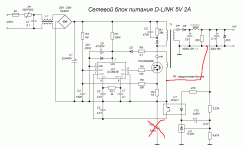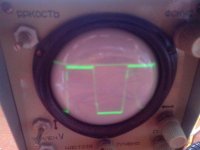I had rewind transformer today.
So far is what I've observed:
* IRFP460 I have with 50kHz 350VDC draw about same current: 21mA, which is bad
* IRF730 I tested at 50kHz 350VDC draw 8mA
* IRFP460 I have at 73,3kHz 350VDC draw 32mA
* IRL1404 at 50kHz 12VDC draw 1mA (just a test)
* Adding load at outputs only adds current by current of the load
* Duty cycle does not matter, and when frequency increases the current increases too.
* If I give a 50kHz reference from this:
http://lynxlynx.tk/log/files/_IMG_20140809_144945.jpg, I then get unusual results: 350VDC 37mA with IRFP460. I am really confused. Should my fets heat up when drawing this current? If not, them I'm
not really against it, since it's
not intended to be a really a high efficiency converter, but a lab supply.
So IRFP460 I have are maybe actually are remarked 450's (I got them from aliexpress) or somewhere is a mistake hides in my layout or circuit. Should I (try to) lower frequency to get acceptable results?



